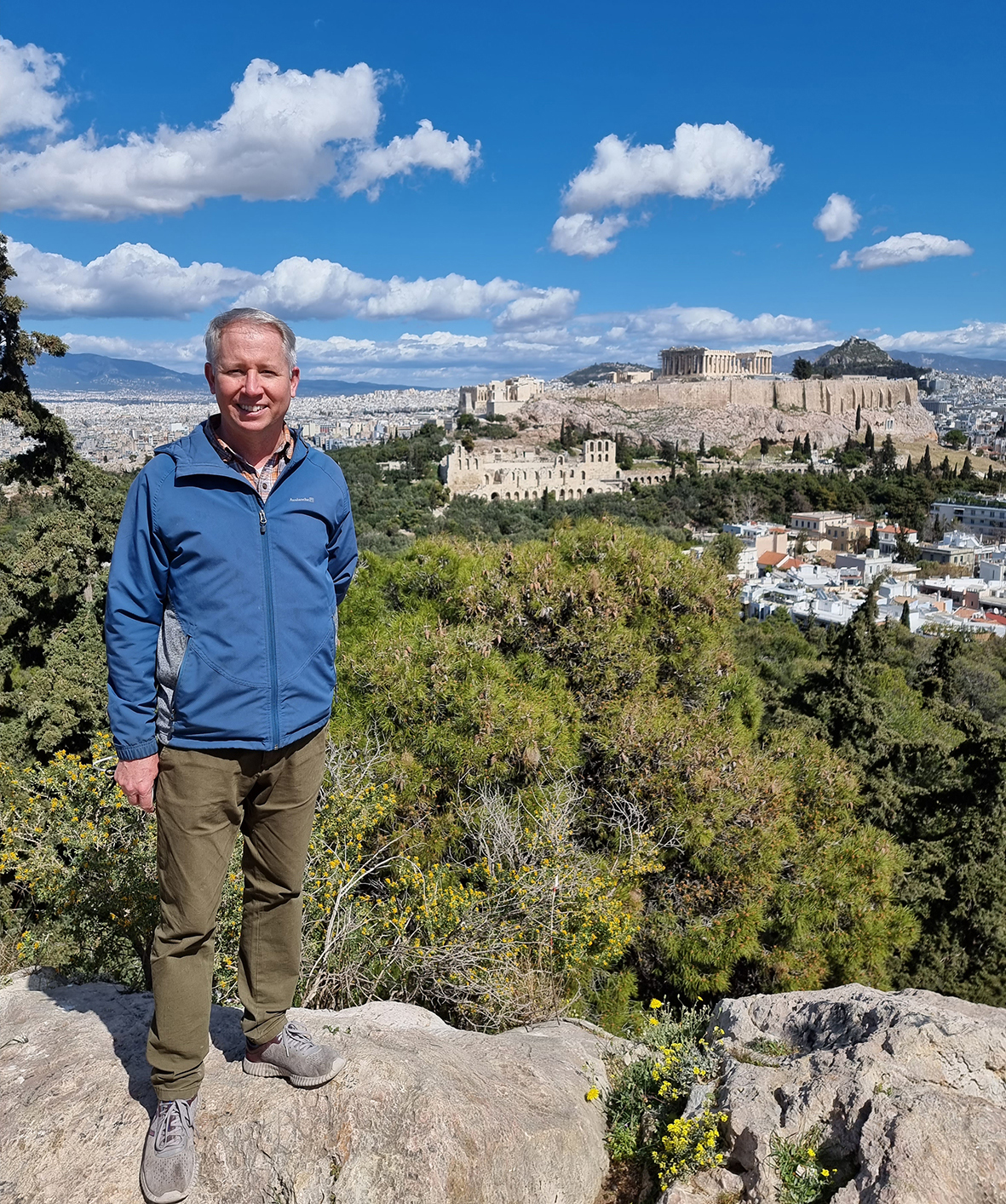June 7, 2023

To celebrate our 2023 Fellowship recipients, we will be spotlighting each of our winners in news stories on the AIA website. We have reached out to our winners to learn about their projects and about their experiences in archaeology. We’re excited for you to meet Brendan Burke, the Richard C. MacDonald Iliad Research Grant recipient for this year.
Richard C. MacDonald Iliad Research Grant recipient: Brendan Burke (he/him); American School of Classical Studies at Athens
What is your fellowship project about?
This project will help us to better understand the political geography and human-environmental interactions in central Greece during the Late Bronze Age (1700-1100 BCE), by focusing on the excavation of ancient Eleon. The site of Eleon is located 14 km from Thebes and the name appears in Linear B texts from the Kadmeion. The site is also included among the places named by Homer as contributing ships and men to the expedition to Troy, his Catalogue of Ships (Iliad 2.500). Our excavations, which are a partnership of the Canadian Institute in Greece with the Ephorate of Antiquities of Boeotia, started in 2011 and, in a short amount of time, have revealed a complex, multiphase Mycenaean site that is also reoccupied in the Archaic and Classical periods for cult activity. Our project has contributed much to the debates of collapse and resilience during the Palatial Mycenaean period (1400-1180 BCE), the important post-Palatial phases (1180-1050 BCE), and the Archaic-Classical periods (800-400 BCE).
Diachronic changes in the urban landscape of Eleon will be mapped, including the development and growth of the lower town and observed rezoning of the acropolis as sacred space from the 7th century BCE onwards. Previous excavations have documented large deposits of discarded votive offerings concentrated on the acropolis, but no altar, shrine, or temple has been identified within the excavated trenches. Geophysical investigations in the summer of 2021 revealed numerous features of interest, but time constraints limited the resolution of the data. One objective of renewed excavations is to investigate several features of interest which may have had a religious function. A second objective will be to define the limits and diachronic growth or contraction of the lower town of Eleon through both a critical reassessment of previously collected survey data and a new campaign of architectural survey.
How did you get your start in archaeology?
My first excavation was in Malibu California as part of a fieldschool through UCLA. I then went to Greece, to survey towers on the island of Leukas with Sarah Morris and Jane Carter, and I continued down the western coast of Greece to the Palace of Nestor at Pylos, where I worked with Fred Cooper. Much of my excavation training was learned at the site of Gordion in central Turkey, working with Mary Voigt.
Where in the world has archaeology brought you (fieldwork, research, conference travel, etc.)?
I spent a lot of my graduate years focused on working in central Turkey, at the home of King Midas, Gordion. I grew very familiar with the city of Ankara which I like a lot. For the last 15 years, it has been central Greece, east Boeotia specifically where I call my archaeological home. Working at a previously unexplored site with colleagues and friends has been great. I have been invited to present the results of our work in many different places, from Vancouver and the Pacific Northwest, Tampa Florida, the UK (London, Cambridge, Oxford), Germany (Mainz, Muenster, and Kassel), and the Pushkin Museum in Moscow nearly 10 years ago.
What is one of the most memorable things that has happened to you in the field?
In our first full season of excavation at ancient Eleon we uncovered a carved bone head with inlaid eyes that remains in my memory..
How has the AIA contributed to your success/professional goals?
The AIA has certainly provided many helpful resources to me and to our field project over the years, including listing our field school in the Archaeological Opportunities Bulletin. The travel awards have also been very helpful to our student volunteers. I have never missed an annual meeting of the AIA, since I started attending in 1991 and have been able to present at nearly every one I believe.
Is there anything else you want to share?
I am very grateful for the funding provided by the Richard C. MacDonald Iliad Endowment for Archaeological Research. Without this support, it would not be possible to offer the research opportunities we make availble to our students. Thank you.
Learn more about what Fellowship opportunities are available through the AIA or reach out to our Programs and Professional Services Coordinator, Kati Albert at kalbert@archaeological.org.